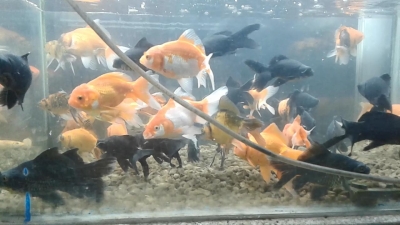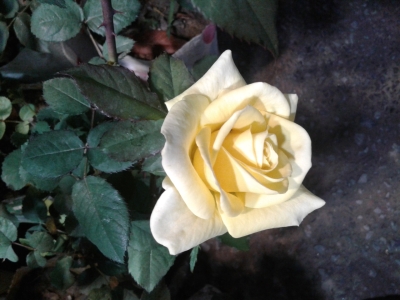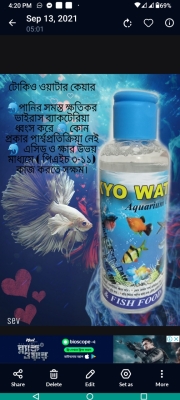Red Dragon Guppies, with their striking appearance and active behavior, are a favorite among aquarists. However, like any aquarium fish, they are susceptible to certain health issues. Identifying and addressing these problems early can ensure their well-being and longevity. Below is a guide to common health problems in Red Dragon Guppies and how to manage them.
Small white spots on the body, fins, and gills. The fish may rub against objects in the tank.
Often caused by sudden temperature fluctuations or poor water quality.
Frayed, discolored fins that may look torn.
Bacterial infections often due to poor water quality or stress.
Difficulty swimming, fish floating sideways, or struggling to maintain buoyancy.
Overfeeding or constipation.
A gold or rusty dust-like coating on the body, accompanied by clamped fins and lethargy.
A parasitic infection, often triggered by stress or poor tank conditions.
Cotton-like growths on the body or fins.
Secondary infections following an injury or poor water conditions.
White patches around the mouth, gills, or body that may resemble cotton.
A bacterial infection caused by poor water quality or stress.
Red or inflamed gills, lethargy, and gasping at the surface of the water.
High ammonia levels due to overfeeding, overstocking, or an uncycled tank.
Weight loss despite normal eating habits, stringy white feces, or bloating.
Ingesting contaminated food or water.
Loss of color, hiding, lack of appetite, or erratic swimming.
Overcrowding, aggressive tank mates, or unstable water conditions.
Swollen or protruding eyes.
Bacterial infections or poor water quality.
Introduction Purple Mosaic Guppies are admired for their striking colors and intricate patterns. Providing the right diet is essential to enhance the
RTP Guppies are a stunning addition to any aquarium, celebrated for their vivid colors and active personalities. Whether you’re a beginner or an exp
Blue Dragon Guppies are stunning additions to any aquarium, but they can be susceptible to diseases if their environment and care are not optimal. Und
Introduction Purple Mosaic Guppies are a stunning variety of guppies known for their intricate patterns and vibrant hues. Breeding them successfully
Blue Dragon Guppies are a remarkable addition to any aquarium, prized for their dazzling colors and lively behavior. Providing a balanced and nutrient
Koi Tuxedo Guppies are prized for their striking color patterns, and maintaining their vibrant hues requires proper nutrition. A balanced diet plays a
Red Moscow Guppies are a stunning variation of the guppy species, prized for their deep, uniform red coloration. Their striking appearance is the resu
Effectively managing breeding cycles is crucial for success in angelfish farming. Proper breeding practices ensure a steady supply of healthy fry, opt
Maintaining high water quality is crucial in angelfish farming, as poor water conditions can lead to stress, disease, and even death. By monitoring an
German Guppies are prized for their striking colors and hardy nature, making them a favorite among aquarists. However, to maintain their vibrant appea
Introduction to Organic Supplements for Poultry Organic supplements have become a popular choice among poultry farmers seeking natural ways to boost
Comet fish, a popular variety of goldfish, are not only loved for their striking, long fins and lively swimming but also for their relatively easy car

Price: N/A

Price: 300 Tk

Price: N/A

Price: N/A

Price: N/A

Price: N/A

Price: N/A

Price: N/A

Price: N/A

Price: N/A